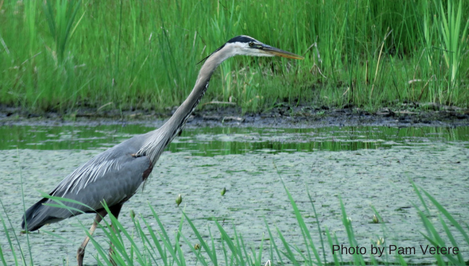
In December 2016, Connecticut Community Foundation awarded $92,000 in grants to 10 Connecticut organizations working to conserve and protect natural resources in the Greater Waterbury and Litchfield Hills region. With these grants, the Foundation aimed to support the preservation of the region’s land, water and wildlife while increasing environmental awareness for residents of all ages.
The new grant awards included:
- Connecticut Forest & Park Association, as fiscal sponsor for Connecticut Land Conservation Council (Rockfall), received $15,000 to strengthen collaboration among the state’s land trusts to preserve the region’s natural resources and agricultural lands.
- Connecticut League of Conservation Voters Education Fund (Hartford) was awarded $15,000 to launch a Latino outreach program titled Chispa (meaning “spark”) to inform, educate, and empower Latinos to take leadership roles in protecting the environment.
- East Litchfield Village Improvement Society (Litchfield) received $1,383 to remove 500 rotting and toxic creosote-soaked railroad ties sitting at the site of the former East Litchfield Depot.
- Flanders Nature Center and Land Trust (Woodbury) received $9,000 to pilot an educational partnership program at The Quassy Sailing Club, which aims to build environmental awareness and stewardship for all ages and diversities.
- Friends of the Litchfield Community Greenway (Litchfield) received $10,000 to complete a substantial portion of the Greenway (the railroad bed from the intersection of Bissell Road to the Butternut Brook crossing), to provide users with the only safe, natural travel route from Litchfield center toward Bantam without having to travel on the shoulder of Route 202.
- Housatonic Valley Association (Cornwall Bridge) received $9,241 to assess culverts and bridges in Oxford, Conn. to identify barriers to fish and wildlife and flood risks to local infrastructure.
- Northwest Conservation District (Torrington) was awarded $9,500 to create Low Impact Development (LID) manuals for the towns of Washington, Warren and Woodbury, which will help them to educate commissioners, staff and the design community on practices that retain, store, filter and clean stormwater on site before it reaches waterways or returns to groundwater.
- Pomperaug River Watershed Coalition (Woodbury) was awarded $10,000 to provide employment opportunities for students to gain conservation knowledge and experience while improving water quality and conservation for area residents.
- Quinnipiac University (Hamden) received $7,876 to investigate endocrine disrupting chemicals for their potential to accumulate in the Naugatuck River and cause adverse health effects. This study will identify and quantify these chemicals from Watertown to Derby, helping to characterize pollutants in the Naugatuck River and collect data on the quality and health of the river.
- Watertown Land Trust (Watertown) was awarded $5,000 to support two appraisals necessary to receive an open space grant from the State of Connecticut. The Trust endeavors to purchase 26 acres of farmland and bog in Watertown and build a path along the bog so that hikers can observe the wildlife in this unique environment.
Said Josh Carey, director of grants management at Connecticut Community Foundation, “We are thrilled to support these fine organizations. From involving youth in addressing urban environmental issues to cutting-edge scientific approaches to keeping our water clean, they are working creatively and collaboratively to protect many of our region’s greatest natural assets.”
Lynn Werner, executive director of the Housatonic Valley Association, said of their award, “This grant is great news for us, but the real winners are the residents of Oxford. Our aim is to improve the health of streams in Oxford and other southern Lower Naugatuck Valley towns by locating problem culvert pipes, bridges and other structures at road crossings in Oxford, then designing a replacement plan for them. Fixing those issues will improve the river flow and fish and wildlife movement and reduce flood hazards, creating a healthier community for all.”







